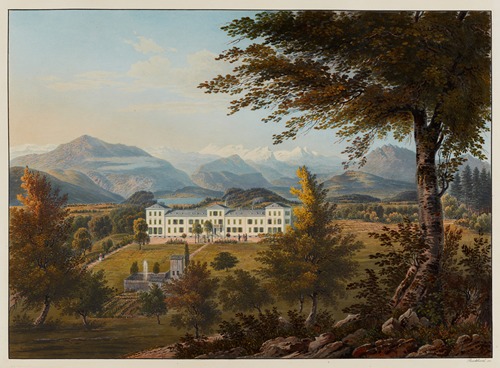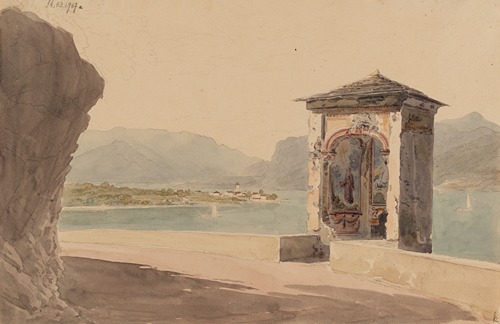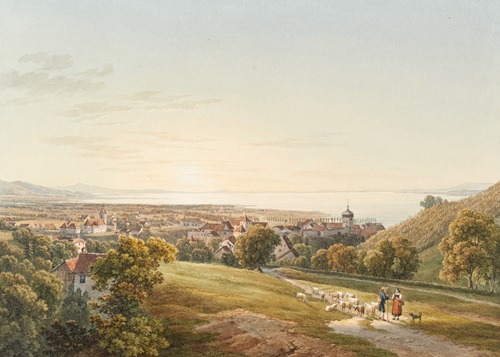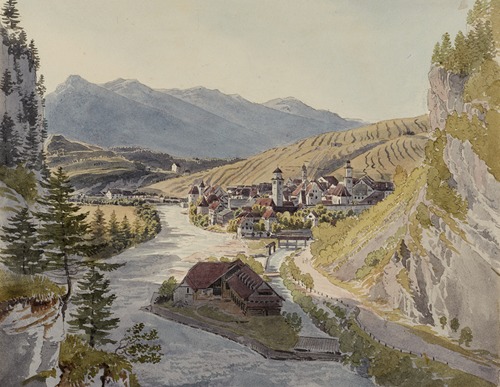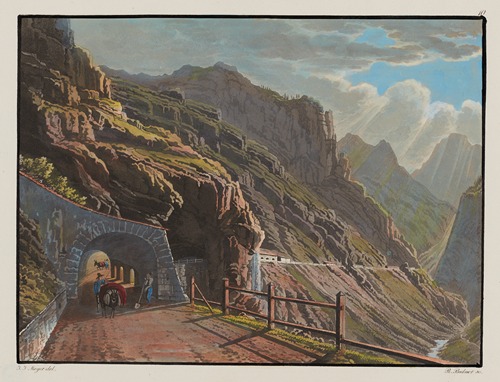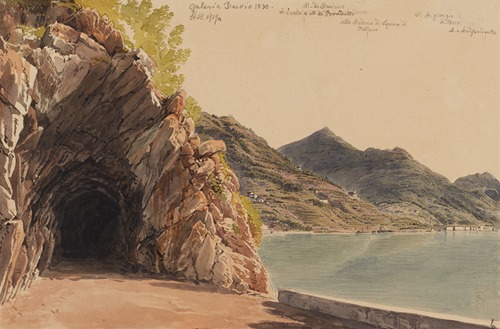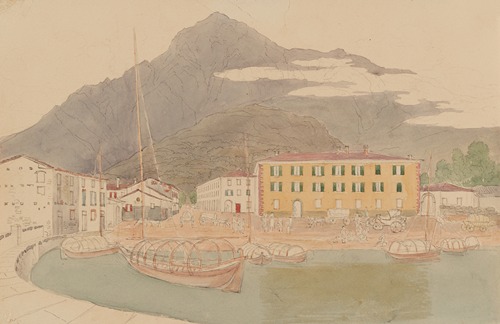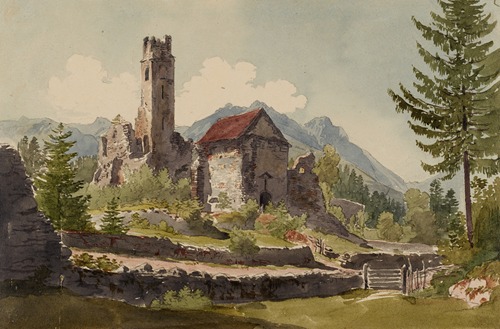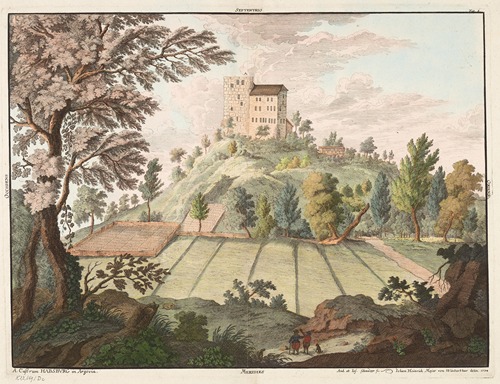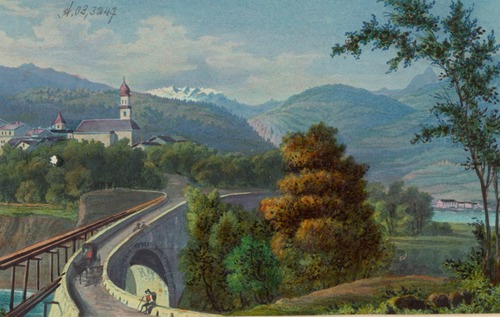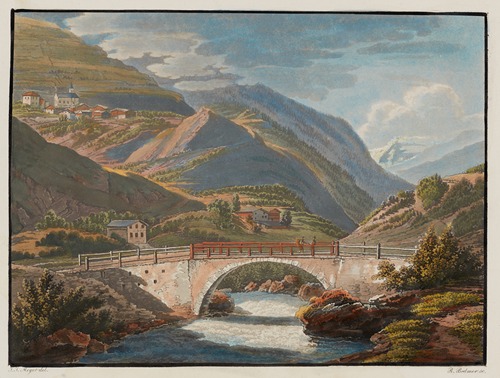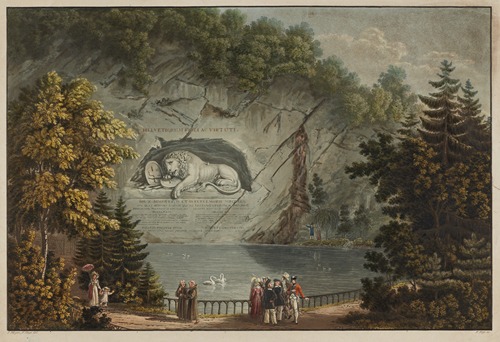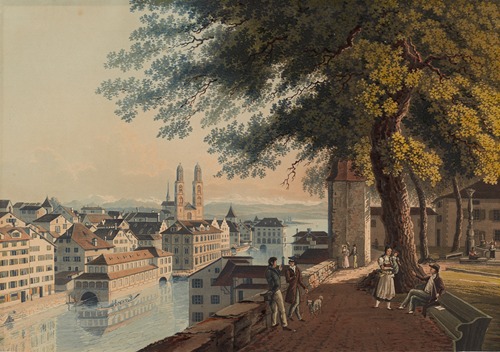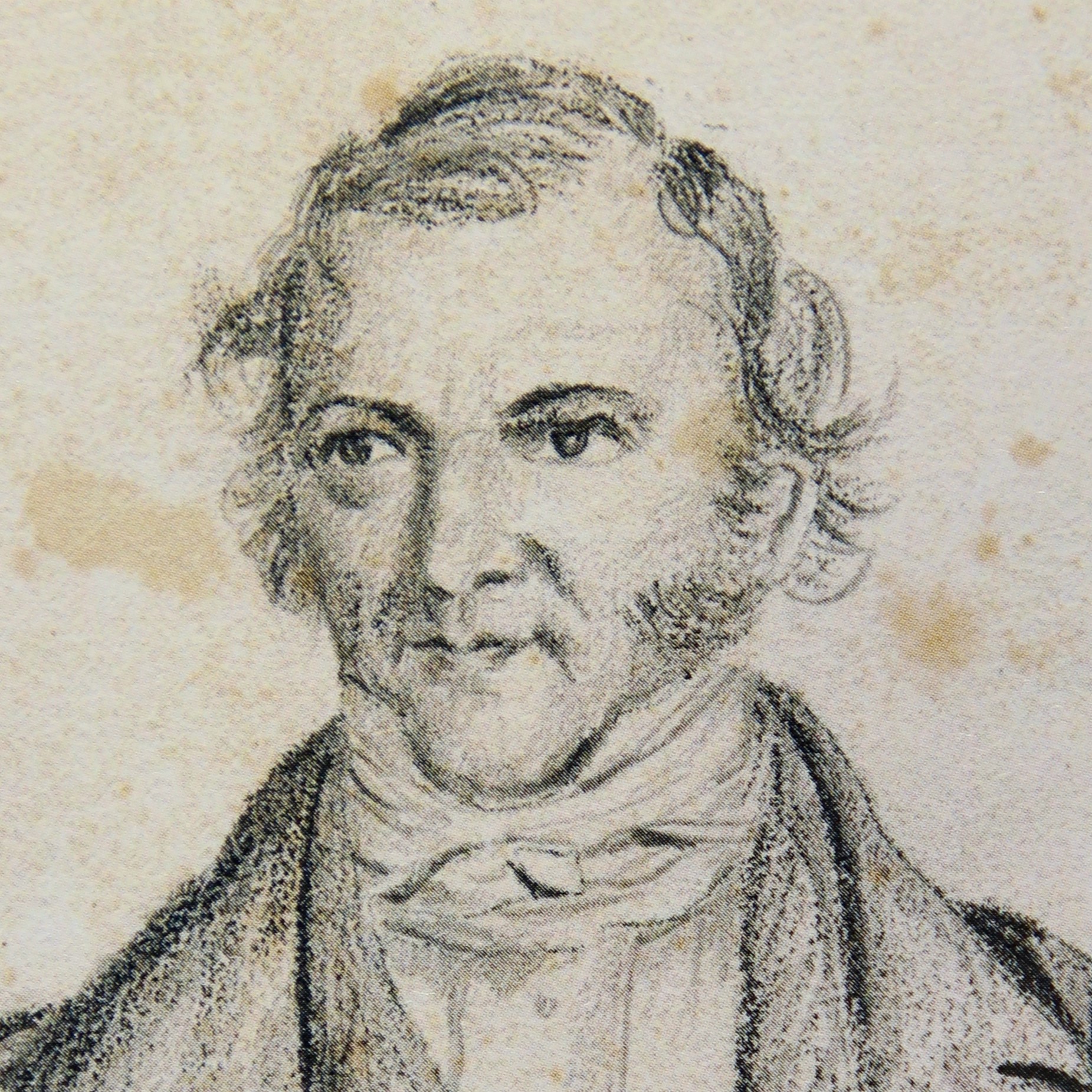

Johann Jakob Meyer
Johann Jakob Meyer was a Swiss painter.
Johann Jakob was the second youngest of seven children and grew up near the church in Meilen. His father was a silk manufacturer and financial administrator named Leonhard Meyer. After the early death of her husband, Meyer's mother, Anna Meyer, née Wunderli, continued the family business. The small, sickly Jakob helped on the modest farm and in the factory. He also observed nature and made sketches in his sketchbook.
His talent for drawing was noticed and at the age of 14, Meyer began an apprenticeship with the landscape painter Heinrich Füssli in Zurich. He learned etching and aquatint techniques from Franz Hegi. At the age of just 16, he took part in the annual exhibition of Zurich artists with a chalk drawing.
After his apprenticeship, Meyer traveled throughout Switzerland, often on foot. He recorded his observations in drawings. After 1811, he spent several years with the artist family Lory père & fils in Neuchâtel. His travels and wanderings took him to Valais and the Bernese Oberland.
He later settled in Zurich, where he carried out various commissions. In 1816/17 he wandered through the canton of Graubünden for the first time. In 1817 he married Anna Nievergelt and settled with her, his mother and his sister Anna in the Hottingen district of Zurich. With their help, he ran his own artist's studio. The women prepared the engravings according to his specifications and colored them.
In 1820, Prussia's Crown Prince Frederick William wanted to see Meyer's pictures during his journey through Switzerland and ordered two pictures of the Eiger, the Wetterhorn and the Wellhorn.
In 1823, Meyer spent two months travelling through the canton of Graubünden again, sketching for his illustrated book, Die neuen Straßen durch den Kanton Graubünden (The New Roads through the Canton of Graubünden). The travel writer Johann Gottfried Ebel wrote the text for it. In 1827, he spent two weeks on the Calanda near Chur to draw a large panorama from its summit. In 1829, he traveled over the newly built road of the Stilfserjoch. In 1831, the book Mahlerische Reise auf der neuen Kunststrasse über das Stilfserjoch with 36 aquatints was published about this.
In 1839, Meyer undertook an extended trip to Germany to sell pictures, take orders and draw. In Potsdam, he was granted an audience with the Prussian King Frederick William III, who bought two of his pictures.
In 1842, Meyer traveled to Russia, where he stayed in St. Petersburg until 1845 and met Tsar Nicholas I and his wife. He created 22 plates of the tsar's palaces and gardens. Meyer returned to Zurich in 1846 via Sweden and Denmark. After the death of his wife in 1849, he spent a year in Vienna in 1851, and later traveled to Budapest, after which he returned to Zurich.
